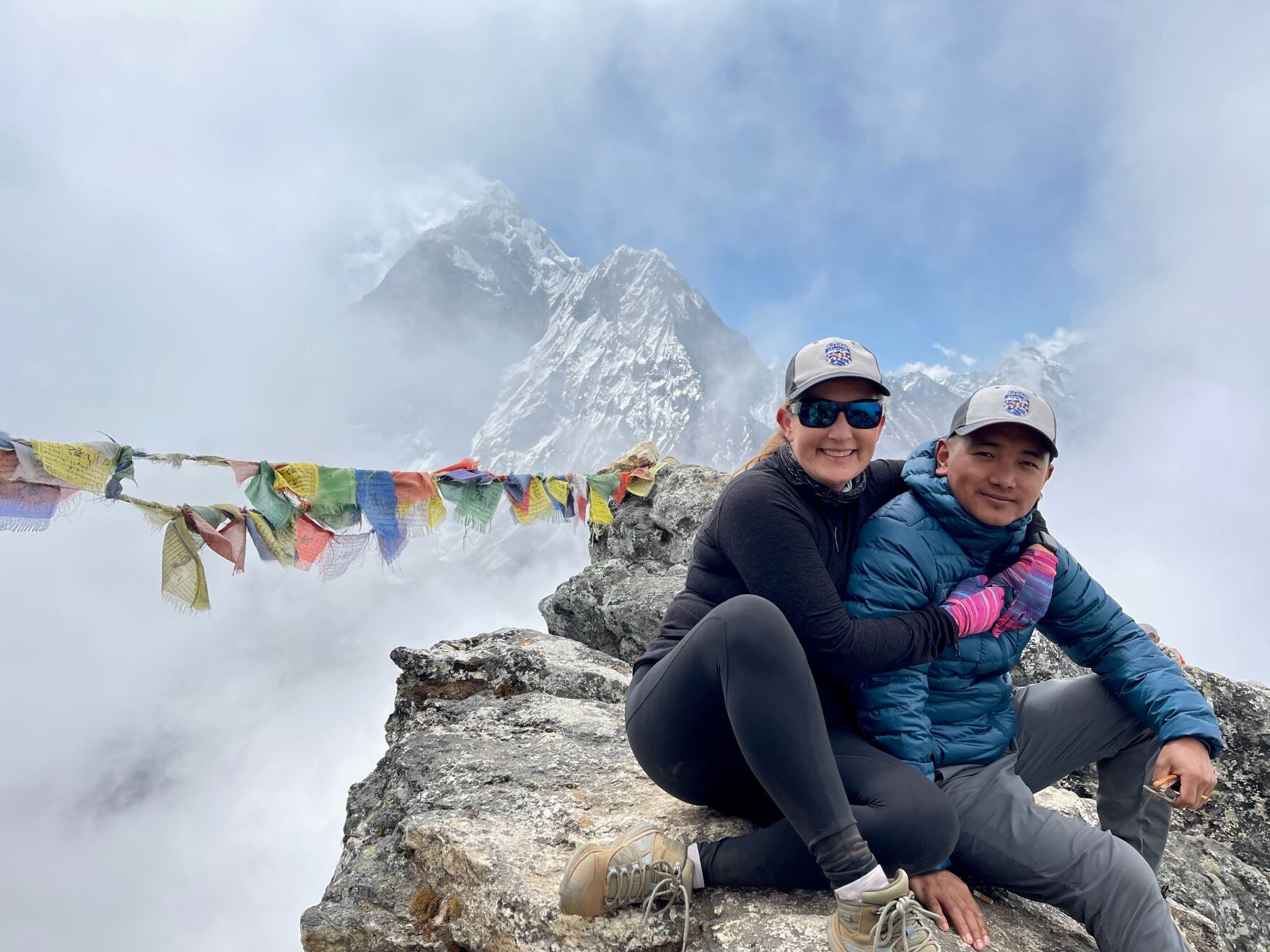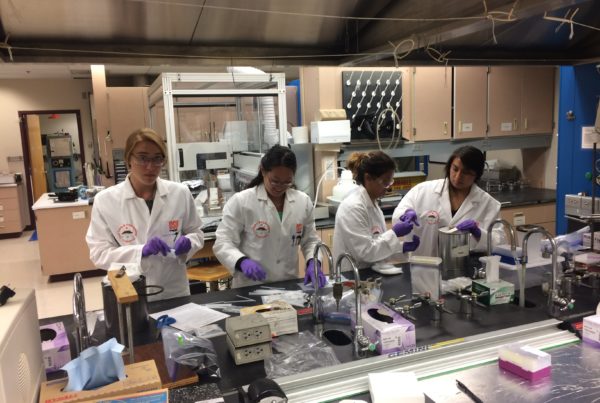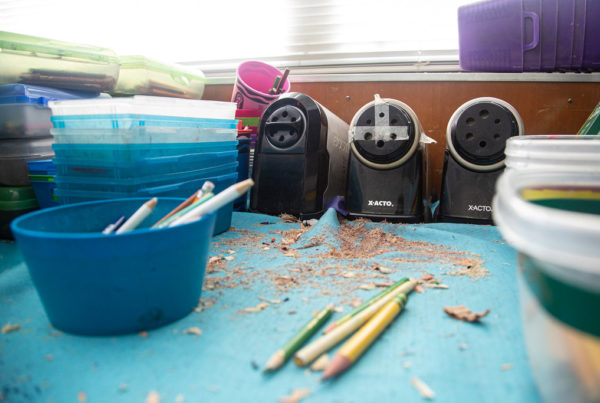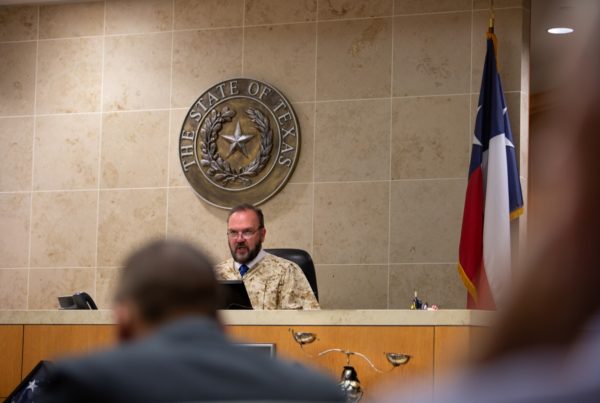From Texas Public Radio:
A former on-air personality in San Antonio took an extended hike in one of the most beautiful, most difficult places in the world, testing her mettle in the process.
You may remember Jennifer Broome from her decade as WOAI’s Chief Meteorologist. She was there from 2000 to 2010, then to Fox 31 in Denver. Then after a stint at Houston’s KPRC she returned to Denver.
“And 2017 was when I went 100% freelance to do everything from travel to environment to still doing a lot of TV. But now I get to do it when I want to do it,” Broome said.
She has her own travel channel on youtube called Swept Away With Jennifer Broome, and freelances most all the time.
“I am a travel journalist, so I do stuff for a variety of different outlets, from the Weather Channel to Triple-A,” she said. “So I get to travel for a living, and I love it.”
Given her work, it’s not surprising to see Facebook pictures of Broome in many locations around the world. Perhaps her most exotic shots this spring came from Kathmandu.
“When you get to Kathmandu, it’s kind of the introduction to a very different culture, and a very different belief system,” she said.
Kathmandu wasn’t her destination though. It was just a stop on the way.
“You go from this fast and furious of Katmandu, and we took a helicopter over to Lukla, which is one of the most dangerous airports in the world,” Broome said. “Lukla sits pretty close to the same elevation as Breckenridge, Colorado, so it’s about 9,600 feet.”
As beautiful as Lukla’s high mountain setting is, it was just the beginning of her trek.
“Yeah…I did the trek to Everest Base Camp. You know, a lot of people said, Why didn’t you summit Everest? Because I don’t want to have to walk across endless crevasses on a ladder. I’m not doing it!” she said.
Just past Everest Base Camp is the Khumbu Icefall, strewn with hundreds of feet deep crevasses, over which climbers use ladders to pass. Broome didn’t just decide to fly solo to Nepal. She went as part of a trekking tour with a friend.
“I went with my friend Jon Kedrowski, and he has summited Everest three times,” she said.
The tour of 10 trekkers were guided by Jon, but also by porters, and a pair of Sherpas, by the name of Geljen or Lochta.
“I always had either Geljen or Lochta, and Lochta summited Everest five times. One of them was with me at all points in time,” Broome said. “There were moments when I was struggling and they would just take my pack and carry their pack, which is super heavy, and then put mine on.”
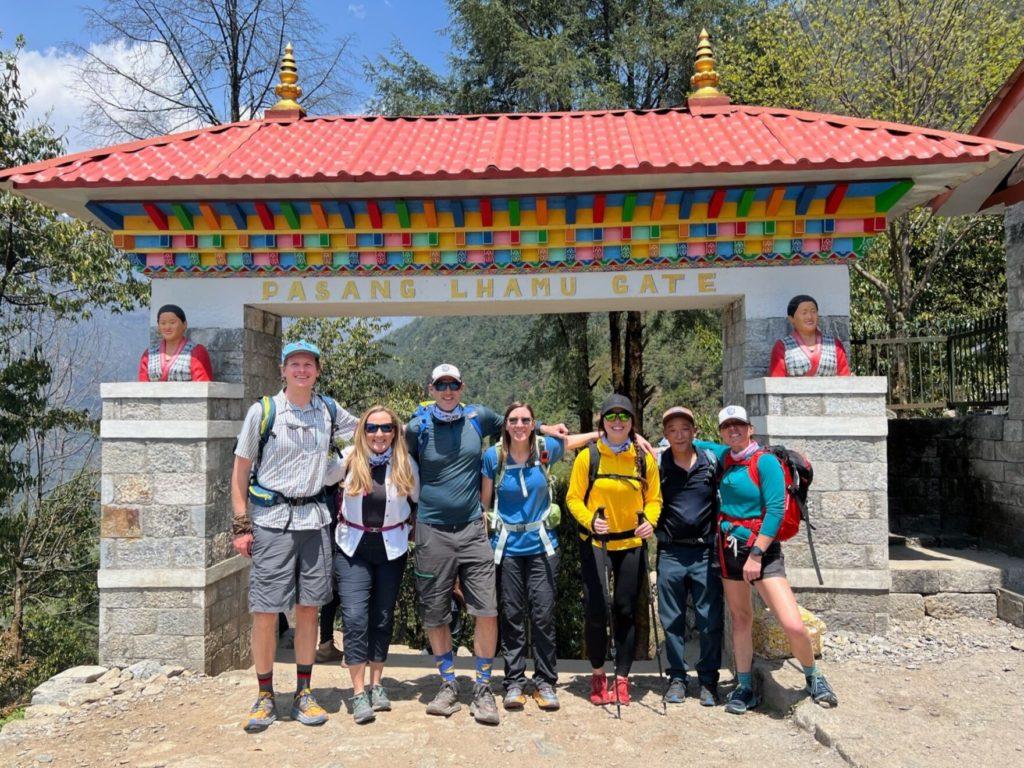
group picture from the beginning of the trail at Lukla. Jennifer Broome is second from left, Kedrowski 3rd from left
Broome said the Sherpa’s quiet strength was perhaps best illustrated by something she saw on the trail.
“There was one spot we were going and it was super steep. And I look and we see this guy and he’s got this rectangular thing on his back. It was a washing machine!” she said. “And that moment made me realize everything that I ate, everything that I drank, everything that you came in contact with, has been carried in on somebody’s back or on livestock.”
There are no roads and no vehicles in this area of Nepal. Mountains loom larger than any in the continental U.S. and the walking paths run roughly parallel to the streams and rivers that snake back-n-forth at the low points between them.
Despite the remoteness, there are small towns that dot the path at intervals between Lukla and Everest Base Camp.
“I had no idea that I was going to be going through so many villages along the way. We slept in, they call them tea houses. But it could be anything from like a lodge or an inn,” she said.
Lodging was austere but comfortable, with a full bathroom. The closer to base camp they got, the more spartan the accommodations.
“You might only have a sink and toilet and showers down the hall. Communal shower,” she said. “It’s rustic and you have to be okay with that. This is not five star traveling.”
A joyful sidebar to the 90-mile hike was their monastery visits. Broome had permission to film at the first one, Pema Choling monastery.
“Seeing that the bright colors and the artwork in these monasteries are just incredibly gorgeous. And we sat down and kind of all sang a prayer for our safe journeys,” she said. “And then all of a sudden, the monks come in and they’re chanting, and then they start playing instruments. They were doing a blessing for us and blessing our journey.”
The journey to base camp also had what they call acclimatization hikes. These hikes test your body to make sure you’re not getting altitude sickness, which happens to some.
“We did our second acclimatization hike from a town called Dingboche, and that’s above treeline. I believe 16,700 feet was the summit for that day,” she said. “I laughed. I cried, I screamed. I sang to myself. And I knew at that point if I made that summit, that I could make base camp.”
Not everybody in her trekking party made it there.
“We had one girl in our group that did have to be flown out from 16,500 feet,” Broome said. “She progressively got worse and she made the choice to fly out. Altitude sickness is a real thing.”
That 40-mile trek to Everest Base Camp is an 8,000-foot elevation gain.
“You have to listen to your body and you also have to communicate with your Sherpas, and if you start to feel bad, you need to let them know,” she said.
Broome made it to Everest Base camp, and had permission to hike all the way to the beginning of the Khumbu Icefall. But by then the 17,600-foot elevation finally caught up with her.
“I was going to do a live shot for the Weather Channel from base camp. I started feeling really bad and the weather was changing really fast so we made the decision to trek back down to Gorak Shep where we were spending the night,” she said.
She was barely able to do that Weather Channel shot as a snowstorm moved in. The altitude sickness abated.
“For me it was an eye-opening experience. If you want to do something like this as my trek leader Jon Kedrowski has said, you train for mountains by climbing mountains. It is not easy,” she said.
One of the hard parts for Broome was how to deal with her fear of heights, something which popped up in particular three times on the way up, and three times on the way back down.
“I have to go through a series of suspension bridges. That’s already for me, like testing my fears,” Broome said. “And not only do you have to go across these bridges, you might have livestock coming from the other way.”
Along the way, Sherpas and innkeepers give out silver scarves called Khatas as a welcome to Nepal, and for luck on the trek.
“Lochta gave me my very first one and I trekked with that the whole way, until we were back to the Hillary Bridge. People have tied theirs on there and I wanted to leave mine in the center,” she said.
But then Broome heard a familiar sound.
“I’m tying it and all of a sudden I hear the bells. There is a huge donkey train coming and I immediately just start booking a cross because I am not going to be on that bridge with a ton of donkeys coming in!” she said.
Her journey as posted on Facebook had the feeling of a kind of pilgrimage.
“I am a very spiritual person. I have a very strong Christian faith,” Broome said. “And there were many times where I had to rely on that a lot. I’ve had a lot of loss in my life.”
She’s lost both of her parents, and her brother in the past few years.
“I took my parents and my brother with me on this journey. My brother lived in Ireland for a little while, and he loved a good Irish pub. And so I was in these mountain villages and I would see an Irish pub and I was like, okay, that’s the sign. Jimmy’s there,” she said. “My dad, he would love to know that his daughter is doing this.”
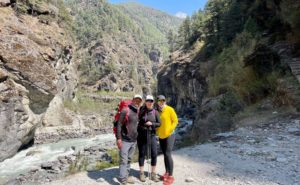
Geljen, Jennifer and Haley with the Hillary Suspension Bridge behind them
She carried their memories with her, and felt their loss even as they powered her trek.
“And then, my mom, one of the biggest signs for me was in an effort to let go of some of this grief was my last view of Everest. And all of a sudden in the tree, there’s this little yellow bird that just comes through and it starts singing. My mom loved birds. And I just, you know, the floodgates opened, (I) start crying,” Broome said.
She said she’s got a couple of big takeaways from this journey.
“We live to excess here in the United States. You’ve got to have the bigger car, the bigger house, whatever,” Broome said. “And sometimes you hear the happiest people are the people who have the least. Traveling as much as I have, and especially in a place like Nepal, you see that.”
She also says about that bucket list you have: start checking things off.
“Do this stuff now. Don’t wait. Don’t say ‘Ooh, I’m going to do that when I retire’ or ‘I’m going to do that in ten years.’ Do it now!” Broome said. Travel is the only thing that makes you richer.”
She’s clearly benefited from her Nepal trek, and it may not be the last one. She’s looking into hiking the Annapurna circuit, an 81-mile trek not that far from the Everest trek.


